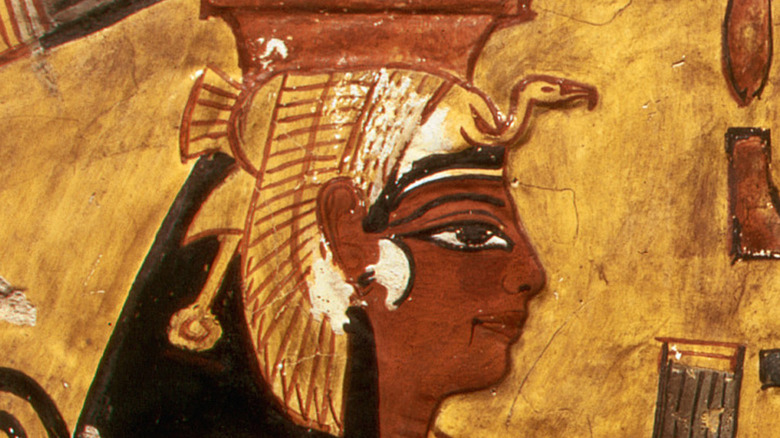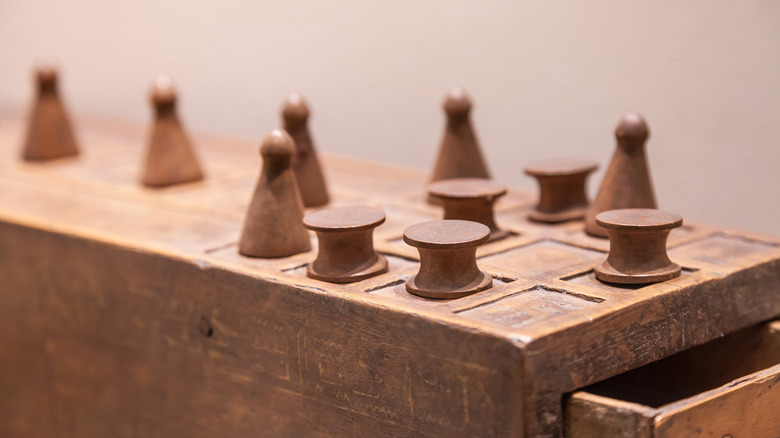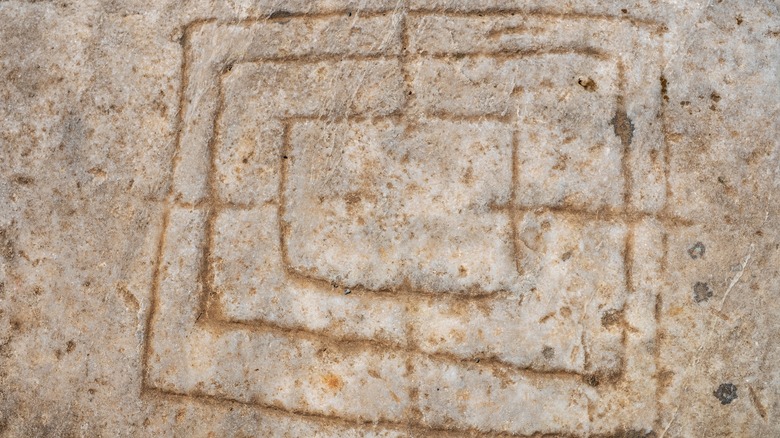The Truth About Board Games In Ancient Egypt
Sure, no one was playing Apples to Apples 6,000 years ago, but board games have a much longer history than you'd think.
Chaturanga, the precursor to chess, was played in India as early as the sixth century A.D.; in Mesopotamia 4,500 years ago, board game players preferred something called The Royal Game of Ur (via Smithsonian Magazine). Board games appear to be nearly as old as civilization itself, with every early empire having its own game of choice: Tafl in ancient Scandinavia, Ludus Latrunculorum in the Roman Empire, Patolli in pre-Columbian America, and Go in Zhou dynasty China (as well as today — Go has been played continuously for 3,000 years).
Likely older than all of these are the board games of Ancient Egypt. Senet, beloved by Tutankhamun and Queen Nefertari (pictured above), was played as early as 3500 B.C. (via History). Mehen, an "Egyptian snake game" played on a spiral-shaped track, is maybe just as old. And Morris, which later spread to Europe and maintained its popularity for centuries, may have had its origin in the Egypt of 1400 B.C.
A simulation of the netherworld on a game board
The most popular and well-known of these Ancient Egyptian games was Senet, which was important enough to the culture of the time to be depicted in art and honored through ornate game boards for the wealthy class (per Smithsonian Magazine). These elaborate boards were sometimes made from a ceramic material called faience, and colored blue to symbolize life, according to the Metropolitan Museum of Art, which has a few surviving Ancient Egyptian board games in its collection.
Life and death, in fact, were the principle metaphors in Senet. The game was played on a long, narrow board of 10 spaces in three rows, 30 spaces in total. The goal was to advance your game tokens to the end of the board. You could also block your opponent's pieces from advancing, and even send them backwards. This simple set-up — sort of an ancient version of Sorry! — was supposed to symbolize the journey through the afterlife. Over time, Senet became a "simulation of the netherworld, with its squares depicting major divinities and events in the afterlife," said Egyptologist Peter A. Piccione in the journal Archaeology. Note that King Tutankhamun was buried with five different Senet game boards, according to the Met Museum, perhaps to remind him of the trials still ahead of him.
Other games: Twenty Squares, Mehen, and Morris
Though Senet's cultural importance to Ancient Egypt was unique, it wasn't the only game played in the long-lasting civilization. Mesopotamia's Royal Game of Ur, or Twenty Squares, was played in Egypt as well — Senet boards were often made with set-ups for Twenty Squares on their reverse sides, much as some chess boards today have a backgammon board on their reverse (via The Metropolitan Museum of Art). In this game, players rolled knucklebones like dice to move their pieces, racing each other across the board.
Less is known about Mehen, played between 3100 B.C. and 2300 B.C. in Egypt's Old Kingdom, according to Smithsonian Magazine. In the game, tokens shaped like lions and spheres moved along a snake-like spiral, but the exact rules are unclear. The game of Morris, however, was clear enough to persist for centuries and across the ancient world. Though the first known example of it was a Morris board carved on part of the 1400 B.C. temple of Kurna in Egypt, over the next few millennia the game spread as far away as England and Norway, and was referenced by Shakespeare in "A Midsummer's Night Dream."


